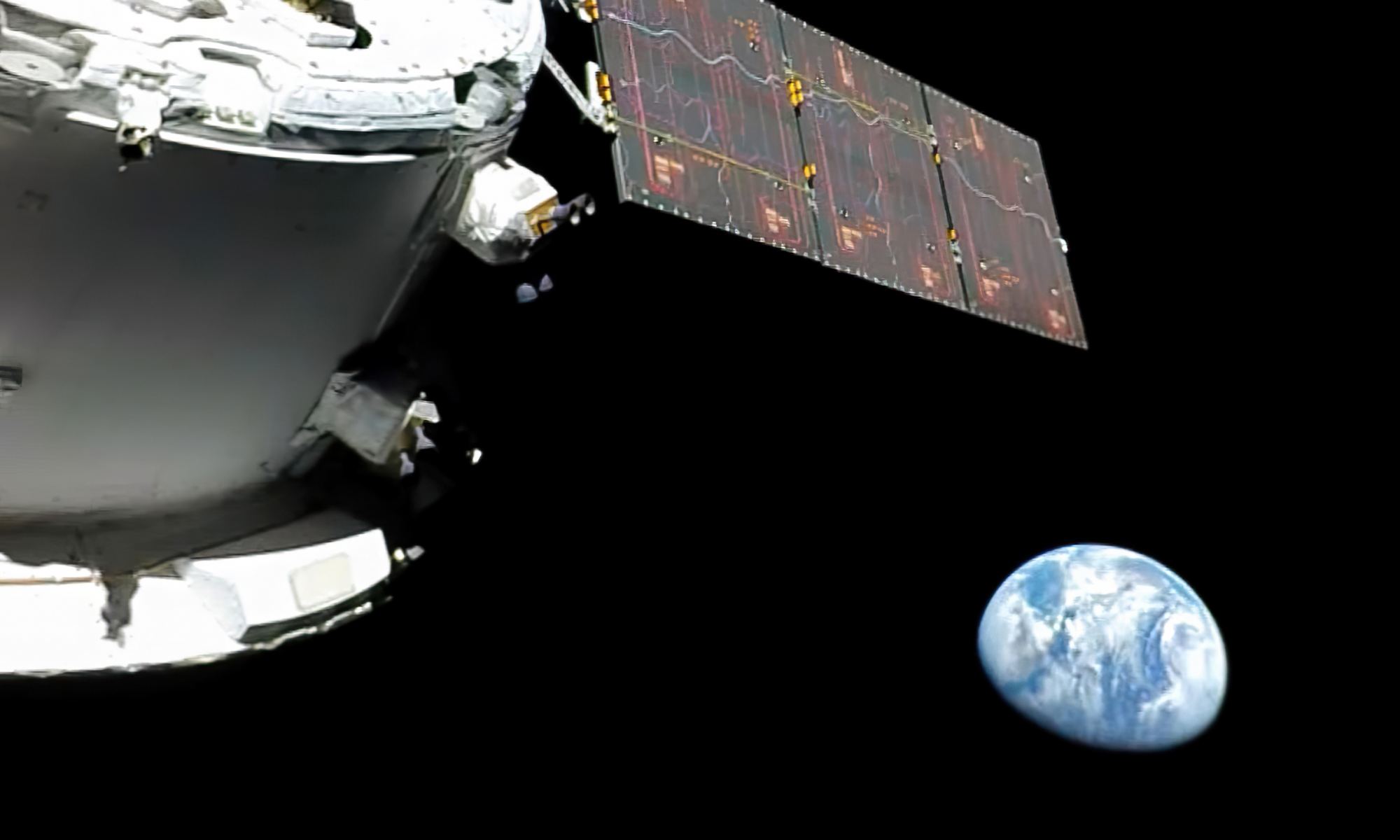As it heads for the moon, NASA’s Orion space capsule is sending back snapshots of Earth that evoke the “blue marble” pictures taken by Apollo astronauts five decades earlier.
This time around, the photographer is basically a robot, built into the camera system for the uncrewed Artemis 1 mission. The round-the-moon odyssey got off to a spectacular start early today with the first launch of NASA’s Space Launch System, and over the next 25 days it’s due to blaze a trail for future crewed trips to the lunar surface.
Hours after liftoff, a camera mounted on one of Orion’s four solar arrays pivoted around to capture a view of the spacecraft’s European-built service module in the foreground — with our half-shadowed planet set against the black background of space.
“Orion looking back at Earth as it travels toward the moon, 57,000 miles away from the place we call home,” NASA’s Sandra Jones intoned as the imagery came down.
The main purpose of Orion’s 16 cameras is to monitor how the capsule’s components are performing from launch to splashdown, inside and out. The four solar array cameras can also take pictures of Earth, plus pictures of the moon as Orion zooms by.
“A lot of folks have an impression of Earthrise based on the classic Apollo 8 shot,” David Melendrez, image integration lead for the Orion Program at NASA’s Johnson Space Center, said in an online primer on the camera system. “Images captured during the mission will be different than what humanity saw during Apollo missions, but capturing milestone events such as Earthrise, Orion’s farthest distance from Earth, and lunar flyby will be a high priority.”
Snapping selfies with Earth wasn’t the only thing Orion and the Artemis 1 team did in the first 24 hours of the mission: Ten shoebox-sized satellites were deployed from the Space Launch System’s upper stage after trans-lunar injection.
One of the CubeSats, Lunar IceCube, will look for signs of water ice on the moon. Another satellite, LunIR, will take images of the lunar surface to characterize the moon’s thermal environment. of the lunar surface. Japan’s Omotenashi satellite will try to make a “semi-hard” but survivable landing on the moon, while NASA’s NEA Scout is built to unfurl a solar sail and fly away to study a near-Earth asteroid.
Over the coming weeks, the Artemis 1 team will be monitoring how Orion performs, as a test run for a crewed round-the-moon mission scheduled for 2024 and a crewed lunar landing tentatively set for 2025. Three mannequins are sitting in Orion’s seats, wired up with sensors to collect data about radiation exposure and other aspects of the space environment.
The mission’s next big milestone comes on Nov. 21, when Orion is due to make its closest approach to the moon — zooming past at an altitude of about 60 miles. The spacecraft will fire its main engine and take advantage of the moon’s gravitational field to maneuver into a looping orbit that ranges out as far as 40,000 miles.
Orion’s acid test will come when it heads back to Earth and re-enters the atmosphere at a velocity of 24,500 mph. The heat shield has been built to weather temperatures rising to 5,000 degrees Fahrenheit, but Orion’s descent to a Pacific Ocean splashdown on Dec. 11 will mark the first time that the heat shield is put through a real-world trial.
Artemis 1 has been years in the making, and the multibillion-dollar program has come in for its share of criticism. This mission alone is said to cost more than $4 billion. But today’s successful launch brought nothing but accolades from the White House:

